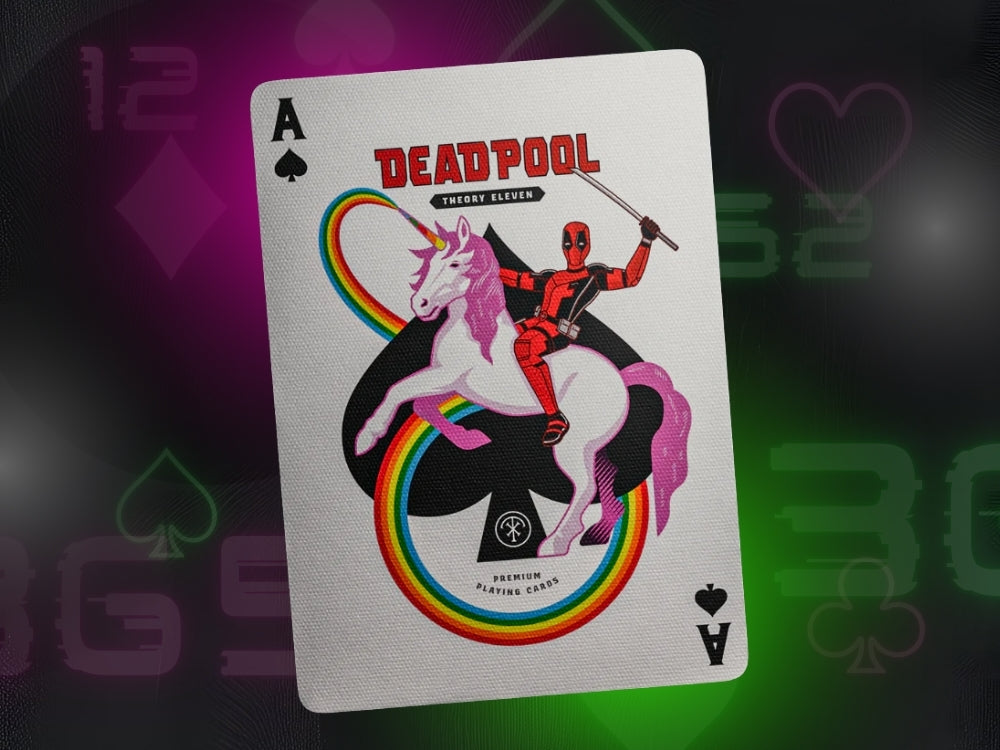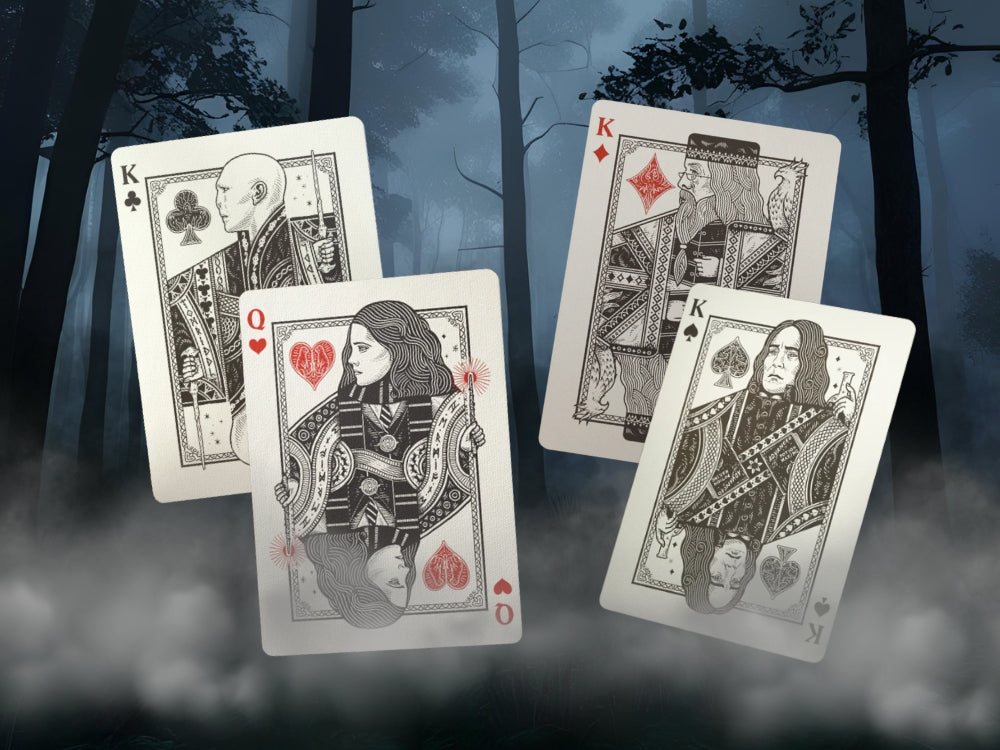You’ve probably held a court card in your hand dozens, if not hundreds, of times without really giving it a second thought. King, Queen, Jack... they’re just there, right? Regal, mysterious, slightly smug. But once you start looking a little closer, the face cards in a deck of cards reveal a surprisingly rich backstory, full of symbolism, evolving designs, and some very human quirks.
It’s one of the things I love about premium playing cards – you start noticing the details. The way a sword is angled. The expression on a Queen’s face. There’s so much hidden in plain sight.
If you’ve ever found yourself wondering what are face cards in playing cards, or how many face cards are in a deck, you’re in good company. The short answer? There are 12 in a standard 52-card deck – three per suit. But the longer answer? Well, that’s where things get interesting.
From Polo Sticks to Power Symbols
The roots of today’s court cards stretch back to 13th-century Egypt, where Mamluk decks featured four suits – swords, goblets, coins, and polo sticks – plus three face cards per suit. When these cards made their way to Europe, the suits evolved: polo sticks became clubs, and over time, France settled on the playing card suits we know today. These weren’t just decorative either. Playing card suits have been linked to social classes, seasons, elements; even human traits like love, ambition, and intellect.
A Royal Reshuffle
Originally, most European decks didn’t even have a Queen. The earliest court card structure was a King with two male attendants.
But in the 15th century, France changed the game by adding the Queen. Germany toyed with the idea first but eventually dropped her. France stuck with it and, thanks to their influence, so did Britain. That’s how we ended up with the classic trio: King, Queen, Jack. Fun fact: The Jack used to be called the Knave, but once indices (the little corner letters) were added, having two Ks for King and Knave got confusing. “J” was a handy alternative.
The court cards themselves were often drawn in elaborate, sometimes baffling detail. British cards borrowed heavily from a French design known as the Rouen pattern, which slowly morphed over time due to repeated copying by English printers – many of whom weren’t exactly Rembrandt. That’s how the designs got abstracted into the stylised, slightly awkward poses we see now.
But here’s where things get weird. The King of Hearts is famously known as the “Suicide King” because his sword looks like it’s going straight into his head. No tragic backstory here, just a centuries-old printing error that no one ever fixed. Same with the One-Eyed Jacks (Spades and Hearts), who got their moniker because they’re shown in profile and only one eye is visible. Turns out, even card art has its accidents.
Double Trouble
A major breakthrough came in 19th-century England: the double-headed court card. Before that, Kings, Queens, and Jacks were printed upright, meaning you had to flip the card to read it properly (and risk tipping off your hand to nosy opponents). Double-headed cards solved that problem by showing mirrored images, so your poker face (and your face cards) could stay discreet.
Initially, people resisted. Traditionalists thought it ruined the artwork. But practicality won, and the design caught on across Britain and, eventually, the world. Around the same time, indices were added; those handy little rank-and-suit symbols in the corners that make it easy to fan your cards and still know what you’re holding. These small changes were huge innovations in gameplay.
Folklore, Taxation, and a Hint of Mystery
Over the years, people have whispered about the hidden symbols and numbers in playing cards. There’s a long-running theory that the 52 cards represent the weeks in a year, four suits for the seasons, and 13 cards per suit for the lunar cycles. Add the values together (Ace as 1 through King as 13) and throw in a Joker card or two, and you get 365 or 366. Coincidence? Maybe. But it’s fun to believe.
Then there’s the Ace of Spades, which developed a bit of a reputation in Britain. In the 1700s, it was stamped to show card tax had been paid– and forging that stamp was a capital offence. That’s one way to make a card unlucky! But over time, the Ace’s ornate design became a signature flourish for British card makers; and it’s still often the most beautiful card in a deck.
Face cards have also popped up in folklore, literature, and pop culture. Jane Austen used card games to reflect the social rules of her time. Shakespeare wove them into metaphors. And modern decks? They’re a playground for artists. I’ve got Lord of the Rings playing cards where the court cards look like Elven royalty, and Deadpool playing cards that are just as chaotic and ridiculous as you’d expect. Premium brands do an amazing job at celebrating these traditions while making them fresh again – just the playing card faces alone are worth a second look.
A Personal Take
For me, face cards are a mix of elegance and mischief. They’re the characters quietly watching while we play rummy around the kitchen table – music on, a bit of chatter, maybe the occasional outburst during a chaotic game of good ol’ snap. And when I hold a deck of luxury playing cards, there’s just something different about it. The texture, the artwork, the weight – it feels like you’re holding a little piece of history. A bit of artwork in your hands.
So next time you ask how many face cards are in a deck, or find yourself wondering why the King of Hearts looks like he’s having a particularly rough day, just know there’s centuries of story packed into those royal expressions. From power struggles to printing quirks, court cards have seen it all. They’re not just game pieces – they’re tiny time travellers, still holding court after all these years.




